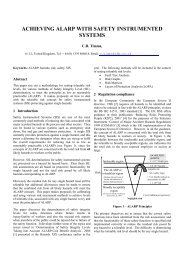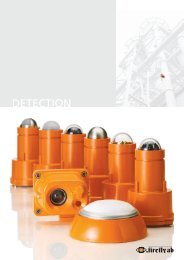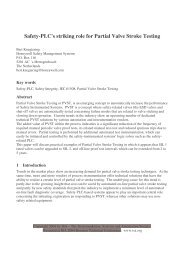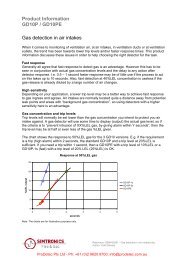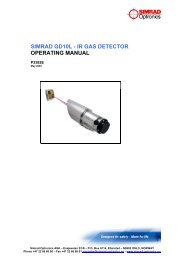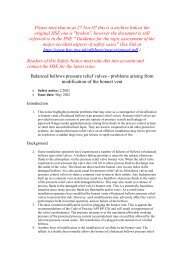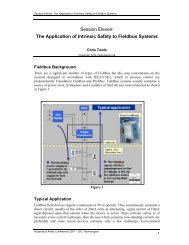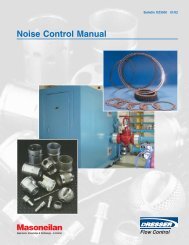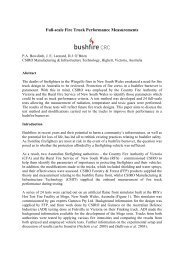Safety Considerations Guide for Triconex General ... - ICEWeb
Safety Considerations Guide for Triconex General ... - ICEWeb
Safety Considerations Guide for Triconex General ... - ICEWeb
Create successful ePaper yourself
Turn your PDF publications into a flip-book with our unique Google optimized e-Paper software.
Module Diagnostics 37<br />
Analog Output (AO) Modules<br />
Analog output modules use a combination of comparison and reference diagnostics. Under<br />
system control, each channel is given control of the output sequentially using the 2oo3 voting<br />
mechanism. Each channel independently measures the actual state of an output value by<br />
comparing it with the commanded value. If the values do not match, a channel switch is <strong>for</strong>ced<br />
by voting another channel. Each channel also compares its measured values against internal<br />
references. Using these diagnostics, each channel can be independently verified <strong>for</strong> its ability to<br />
control the analog output value, thus assuring nearly 100 percent fault coverage and fail-safe<br />
operation under all single-fault scenarios, and most common multiple-fault scenarios.<br />
Analog Output Module Alarms<br />
Analog output module faults are reported to the control application. These alarms can be used<br />
to increase availability during specific multiple-fault conditions. Loss of field power or logic<br />
power is reported to the control application.<br />
Digital Input (DI) Modules<br />
Digital input module pointsuse <strong>for</strong>ce-to-value diagnostics (FVD). Under system control, each<br />
pointis sequentially <strong>for</strong>ced to a test value. The <strong>for</strong>ced value is maintained until the value is<br />
detected by the system or a time-out occurs. Using the integral FVD capability, each point can<br />
be independently verified <strong>for</strong> its ability to accurately detect a transition to the opposite state,<br />
typically every 500 milliseconds. (For more in<strong>for</strong>mation on fault reporting time, see Calculation<br />
<strong>for</strong> Diagnostic Fault Reporting Time on page 39.) These diagnostics are executed independently<br />
by each channel, thus assuring nearly 100 percent fault coverage and fail-safe operation under<br />
all single-fault scenarios, and most common multiple-fault scenarios.<br />
Digital Input Module Alarms<br />
Digital input module faults are reported to the control application. These alarms can be used to<br />
increase availability during specific multiple-fault conditions. Loss offield power or logic power<br />
is reported to the control application.<br />
Digital Output (DO) Modules<br />
Digital output modules use output voter diagnostics (OVD). Under system control, each output<br />
point is commanded sequentially to both the energized and de-energized states. The <strong>for</strong>ced<br />
state is maintained until the value is detected by the system or a time-out occurs (500<br />
microseconds, typical case; 2 milliseconds, worst case). Using the integral OVD capability, each<br />
point can be independently verified <strong>for</strong> its ability to a transition to either state, typically every<br />
500 milliseconds. (For more in<strong>for</strong>mation on fault reporting time, see Calculation <strong>for</strong> Diagnostic<br />
Fault Reporting Time on page 39.)<br />
<strong>Safety</strong> <strong>Considerations</strong> <strong>Guide</strong> <strong>for</strong> <strong>Triconex</strong> <strong>General</strong> Purpose v2 Systems



